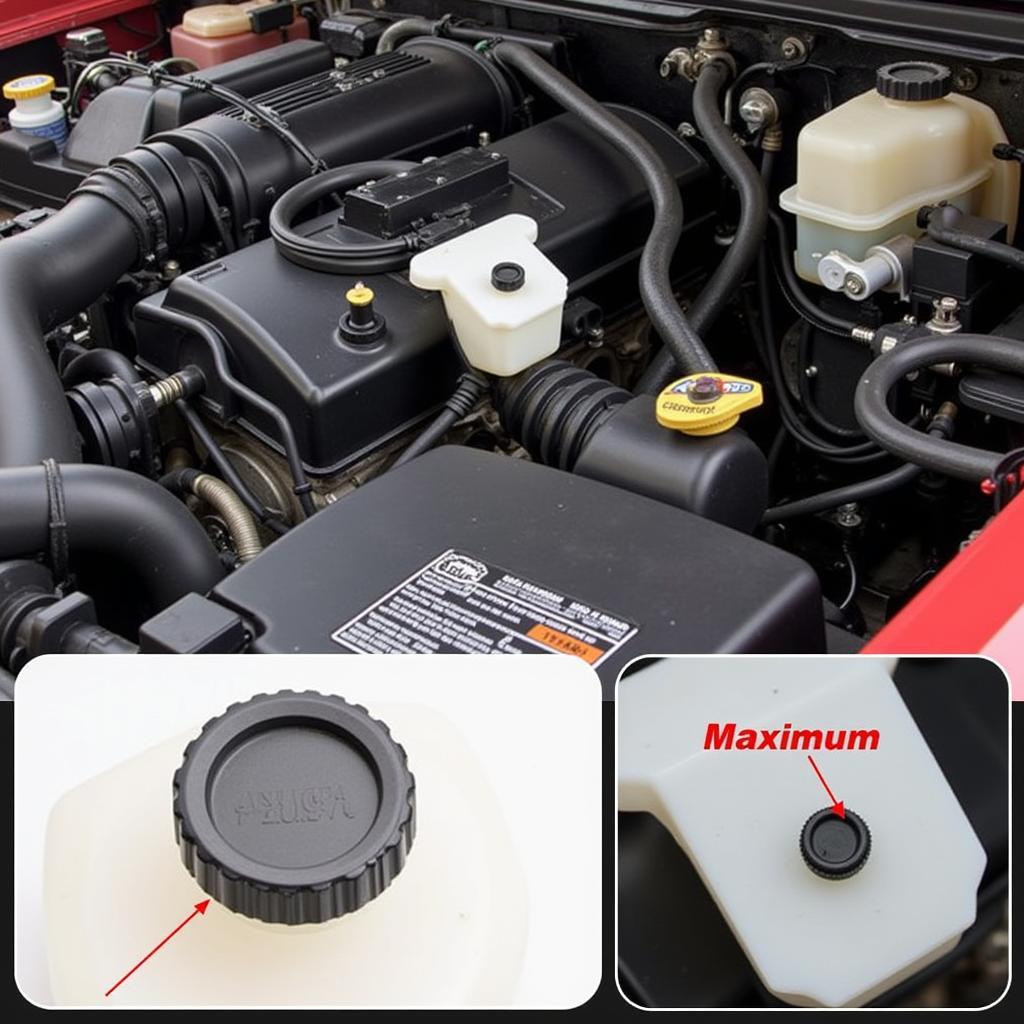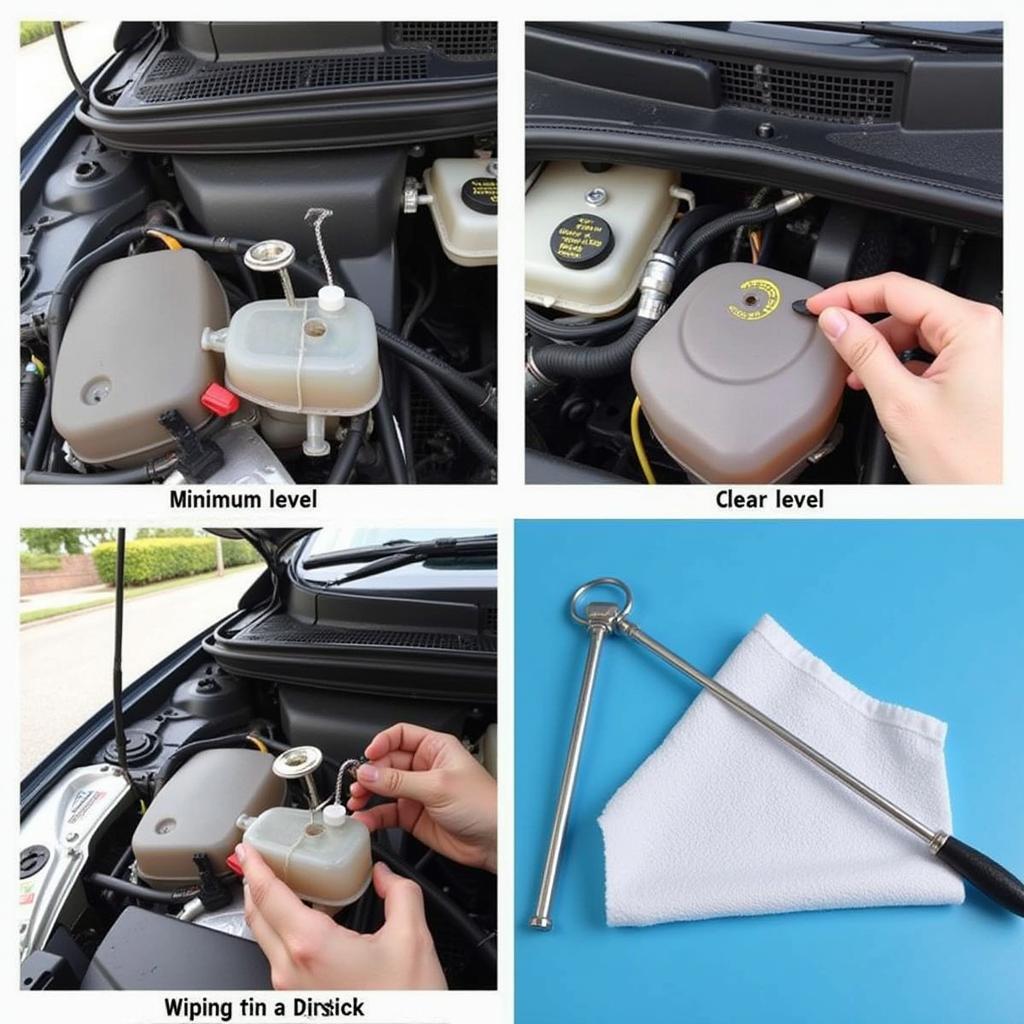The dreaded “Service Brake System” warning on your 2006 Silverado can be a real headache. This article dives deep into the causes of this warning, offers troubleshooting tips, and provides solutions to help you get back on the road safely. We’ll cover everything from simple checks you can do yourself to more complex issues that may require professional help.
Understanding the 2006 Silverado Service Brake System Warning
The “Service Brake System” warning light is your truck’s way of telling you something’s not right with the brakes. It’s a general warning, which means it could be triggered by a number of different issues. Ignoring this warning is dangerous and could lead to brake failure.
Common Causes of the 2006 Silverado Service Brake System Warning
Several factors can trigger the service brake system warning. Here are some of the most common culprits:
- Low Brake Fluid: This is often the easiest fix. Low brake fluid can indicate a leak or worn brake pads.
- Faulty Brake Sensor: The brake system relies on sensors to monitor various components. A malfunctioning sensor can trigger the warning light even if there’s no actual problem with the brakes.
- Worn Brake Pads: As brake pads wear down, they can trigger the warning light. This is a normal part of brake maintenance.
- ABS Issues: Problems with the Anti-lock Braking System (ABS), such as a faulty wheel speed sensor or a problem with the ABS module, can also trigger the warning.
- Parking Brake Engaged: Sometimes, the simplest explanation is the correct one. Make sure your parking brake isn’t engaged.
- Faulty Brake Lines: Leaks or damage to the brake lines can lead to low brake fluid and trigger the warning.
 Checking Brake Fluid Level in a 2006 Silverado
Checking Brake Fluid Level in a 2006 Silverado
Troubleshooting the 2006 Silverado Service Brake System Warning
Before heading to a mechanic, there are a few things you can check yourself:
- Check the Brake Fluid Level: Open the hood and locate the brake fluid reservoir. Check the fluid level against the minimum and maximum markings. If it’s low, add brake fluid of the correct type.
- Inspect the Brake Pads: Look through the wheels to visually inspect the brake pads. If they appear thin, they may need replacing.
- Check the Parking Brake: Ensure the parking brake is fully disengaged.
When to Seek Professional Help
If the simple checks don’t resolve the issue, it’s time to consult a qualified mechanic. They have the diagnostic tools and expertise to pinpoint the problem. This is particularly important if you suspect issues with the ABS or brake lines.
What if the warning light is intermittent?
An intermittent warning light can be particularly tricky to diagnose. It suggests a loose connection, a failing sensor, or a problem that only occurs under certain conditions. A professional mechanic can use diagnostic tools to identify the root cause.
Can I drive with the service brake system warning light on?
Driving with the service brake system warning light on is highly discouraged. It could indicate a serious problem that could lead to brake failure. It’s essential to address the issue promptly.
“When dealing with brakes, safety is paramount. Never hesitate to seek professional help if you’re unsure about anything,” advises John Smith, a certified automotive technician with over 20 years of experience. “A little preventative maintenance can go a long way in preventing costly repairs down the road.”
Conclusion
The “2006 Silverado Service Brake System Warning” can be caused by a variety of issues, from low brake fluid to more complex problems with the ABS system. While some simple checks can be performed at home, it’s crucial to consult a professional if the problem persists. Addressing the issue promptly ensures your safety and prevents potential brake failure.
FAQ
- What does the 2006 Silverado service brake system warning mean? It indicates a potential problem with your braking system, requiring immediate attention.
- Can I drive with the service brake system warning light on? No, it’s unsafe to drive with this warning light illuminated.
- What are the most common causes of this warning? Low brake fluid, worn brake pads, and faulty sensors are common causes.
- How do I check my brake fluid level? Locate the brake fluid reservoir under the hood and check the fluid level against the markings.
- What should I do if the warning light stays on after adding brake fluid? Consult a qualified mechanic for diagnosis and repair.
- How often should I replace my brake pads? Brake pad lifespan varies depending on driving habits, but they typically need replacement every 30,000 to 70,000 miles.
- Can a faulty ABS sensor trigger the service brake system warning? Yes, problems with the ABS system can activate the warning light.

